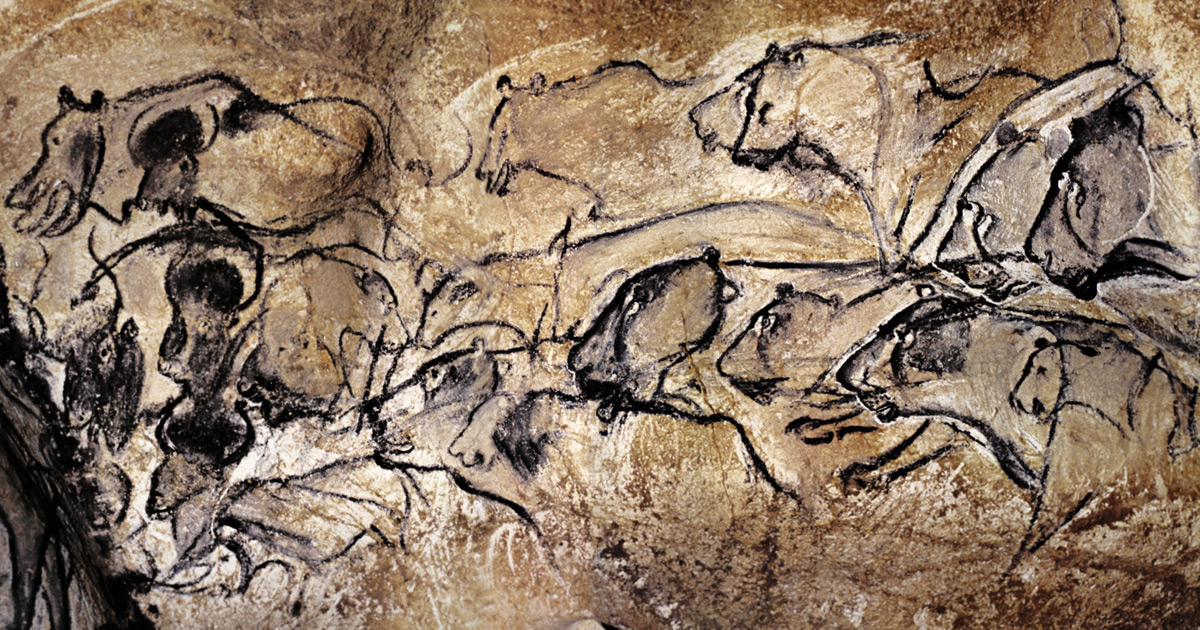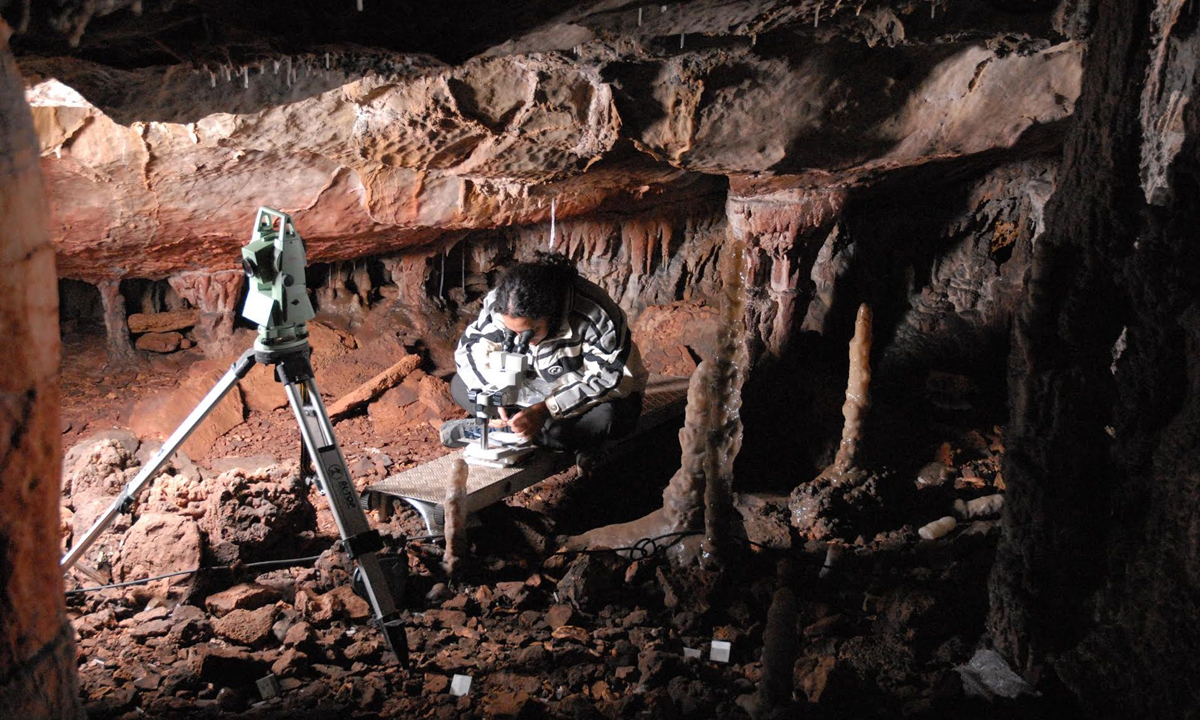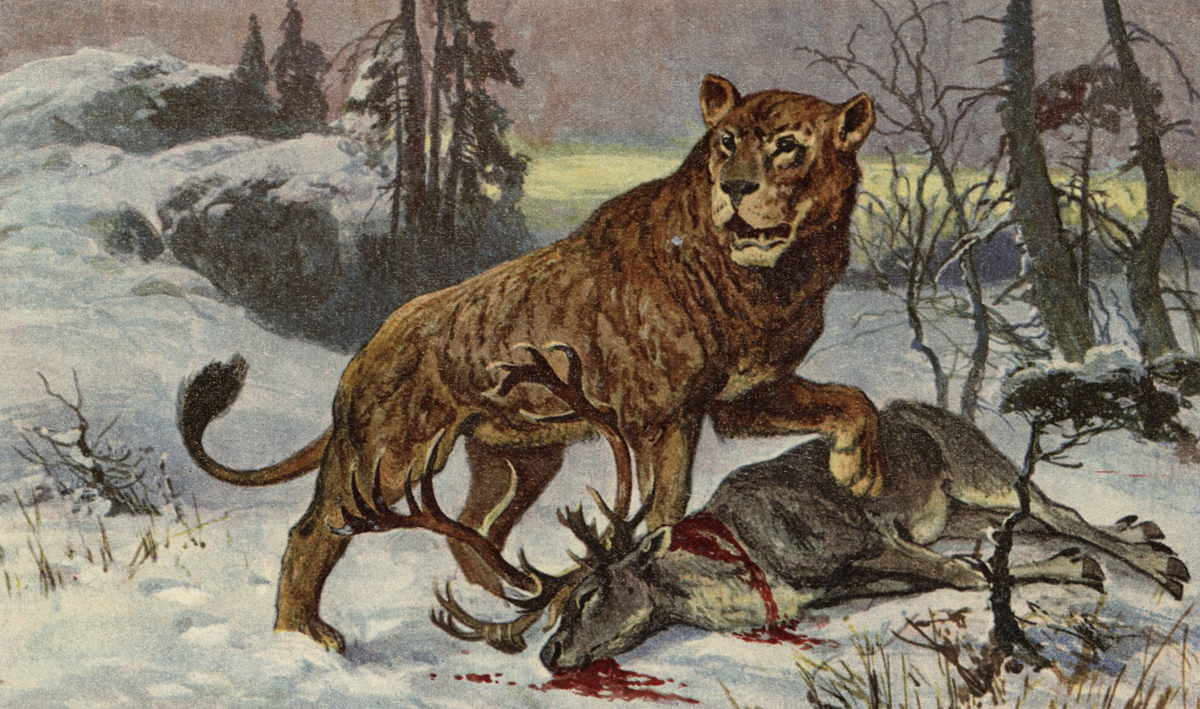


An article by Nicola Davis on theguardian.com - Prehistoric humans may have hunted cave lions to extinction, fossils indicate - reports on the latest research and evidence suggesting that humans were hunting and skinning cave lions 16,000 years ago. This may have played a part in their extinction.

The cave lions depicted in the Chauvet cave of France
The cave lion, larger than the African lion (and lacking a mane), was hunted by Neanderthals and modern humans, alongside other more commonly-hunted carnivores. A team of researchers from Spain claim that evidence suggests humans were skinning the creatures some 16,000 years ago. This implies the creatures may have played an important role among human groups.
Hunting Ice Age cave lions. Extinction. Ritual behaviour #Chauvet https://t.co/RgAum6XErp #archaeology #RockArt pic.twitter.com/jk2Rqqoz3B
— Bradshaw Foundation (@BradshawFND) October 27, 2016
Panther spelaea. Image: BBC
Researchers including Edgard Camarós, co-author of the study from the Institut Català de Paleoecologia Humana i Evolució Social in Tarragona, state that because humans are showing in this archaeological site - La Garma cave in northern Spain - with their expertise in skinning lions, they may have contributed to the extinction of the cave lion. Other factors such as climatic conditions will also have had an effect.
The research has recently been published in Plos One:
Under the Skin of a Lion: Unique Evidence of Upper Paleolithic Exploitation and Use of Cave Lion (Panthera spelaea) from the Lower Gallery of La Garma (Spain)
Marián Cueto, Edgard Camarós, Pedro Castaños, Roberto Ontañón & Pablo Arias.
The team reveal that they found the fossil remains of nine bones from cave lion claws in the lower gallery of La Garma, whose entrance was blocked in the late pleistocene. One fossilized bone was found attached to the cave floor, but the other eight were not, allowing them to be cast in silicone and studied without removing the fossils from the cave.
The researchers believe it is likely that all came from one lion, and were part of a pelt created when it was skinned. DNA analysis would prove they are from the same animal, but that would destroy the fossils. However, all of the phalanxes and the claws are the same size and were located in the same context.

Studying the fossils in the lower gallery of La Garma, Spain. Image: IIIPC
Cut marks on the bones back up the idea that they were part of a pelt. The cut marks are placed just over the place where the tendons and ligaments are attached to the bone; they were actually cutting those elements attaching these claws to the carcass but they didn't cut the part that attached those bones to the skin.

Artist's impression of the extinct European cave lion. Image: Alamy Stock Photo
Camarós states that the evidence shows that the human who skinned the cave lion were highly skilled; the marks are similar to those made by modern hunters when skinning animals.
The team also believes that the location of the bones deep within the cave, a location away from the living area and where there is evidence of artwork and other ritual activity, suggesting the cave lion pelt might have been used in a ritual.
Not everybody agrees. Clive Finlayson, director of the Gibraltar Museum, believes that more evidence is required to prove this was a regular event, that there was a human agent cause for cave lion extinction and that this was ritual behaviour.
The cave lions of Chauvet:
http://www.bradshawfoundation.com/chauvet/panel_of_the_lions.php
Ritual behaviour - view the Lion Man of the Ice Age:
http://www.bradshawfoundation.com/sculpture/ice_age/index.php
by Bradshaw Foundation
Wednesday 23 July 2025
by Bradshaw Foundation
Thursday 29 May 2025
by Bradshaw Foundation
Monday 03 February 2025
by Bradshaw Foundation
Monday 30 May 2022
by Bradshaw Foundation
Wednesday 19 January 2022
by Bradshaw Foundation
Thursday 06 January 2022
by Bradshaw Foundation
Tuesday 21 March 2023
by Bradshaw Foundation
Tuesday 07 February 2023
by Bradshaw Foundation
Thursday 19 May 2022
by Bradshaw Foundation
Monday 04 December 2023
by Bradshaw Foundation
Friday 30 June 2023
by Bradshaw Foundation
Thursday 06 April 2023
by Bradshaw Foundation
Friday 14 July 2023
by Bradshaw Foundation
Monday 22 November 2021
by Bradshaw Foundation
Tuesday 12 July 2016
by Bradshaw Foundation
Tuesday 26 November 2024
by Bradshaw Foundation
Monday 27 November 2023
by Bradshaw Foundation
Friday 07 October 2022
by Bradshaw Foundation
Wednesday 23 July 2025
by Bradshaw Foundation
Thursday 29 May 2025
by Bradshaw Foundation
Monday 03 February 2025
by Bradshaw Foundation
Monday 30 May 2022
by Bradshaw Foundation
Wednesday 19 January 2022
by Bradshaw Foundation
Thursday 06 January 2022
by Bradshaw Foundation
Tuesday 21 March 2023
by Bradshaw Foundation
Tuesday 07 February 2023
by Bradshaw Foundation
Thursday 19 May 2022
by Bradshaw Foundation
Monday 04 December 2023
by Bradshaw Foundation
Friday 30 June 2023
by Bradshaw Foundation
Thursday 06 April 2023
by Bradshaw Foundation
Friday 14 July 2023
by Bradshaw Foundation
Monday 22 November 2021
by Bradshaw Foundation
Tuesday 12 July 2016
by Bradshaw Foundation
Tuesday 26 November 2024
by Bradshaw Foundation
Monday 27 November 2023
by Bradshaw Foundation
Friday 07 October 2022
by Bradshaw Foundation
Tuesday 19 November 2024
by Bradshaw Foundation
Wednesday 22 May 2024
by Bradshaw Foundation
Friday 10 November 2023
Friend of the Foundation











